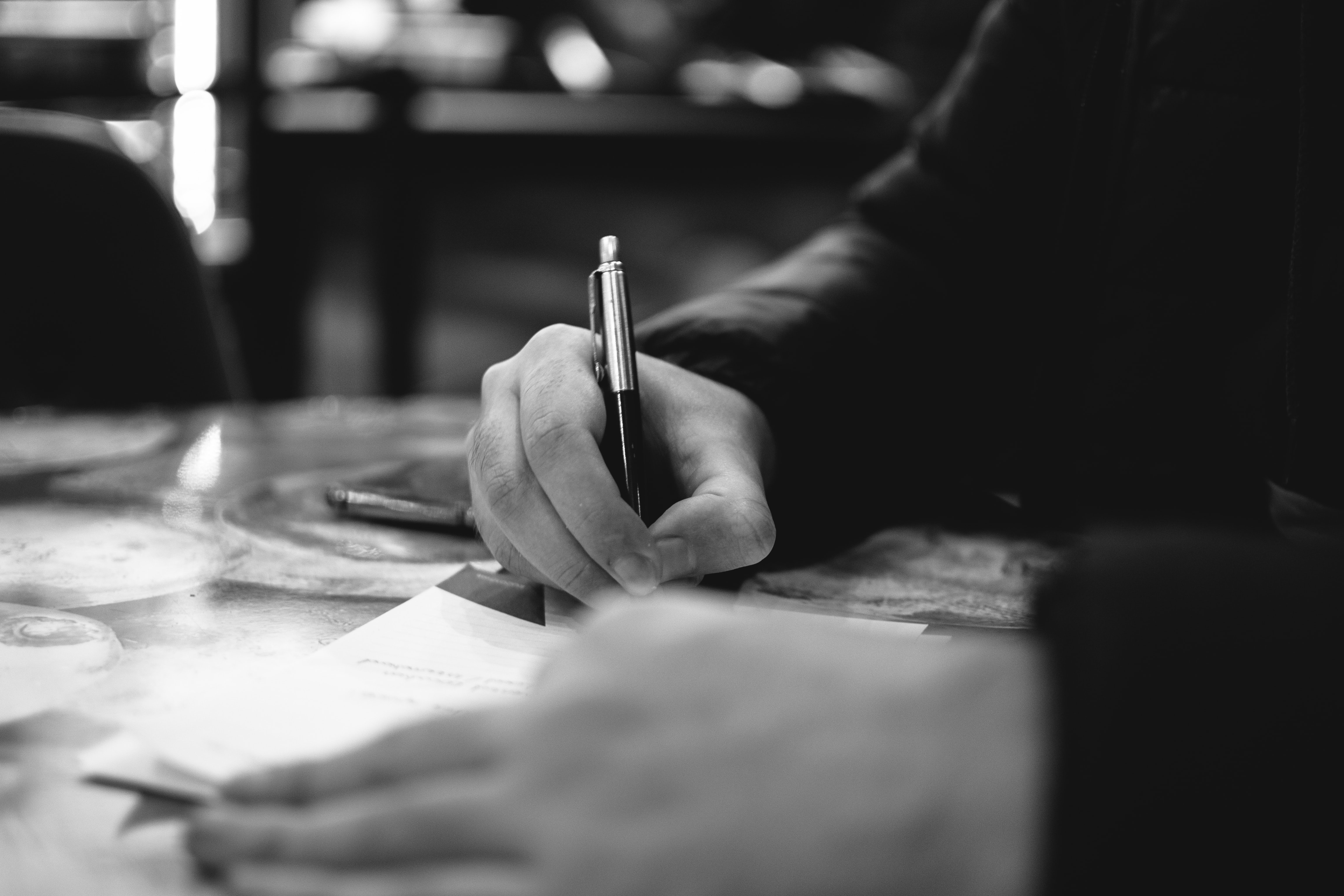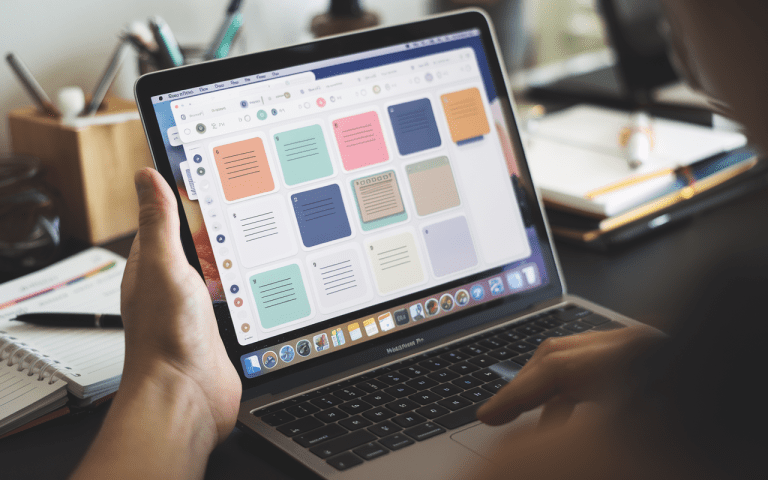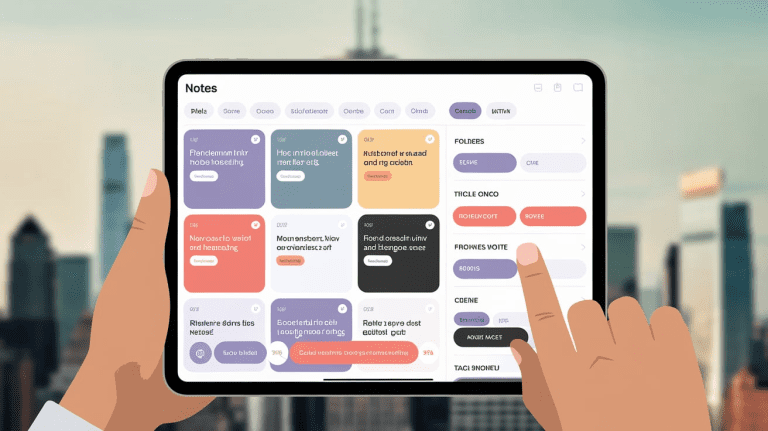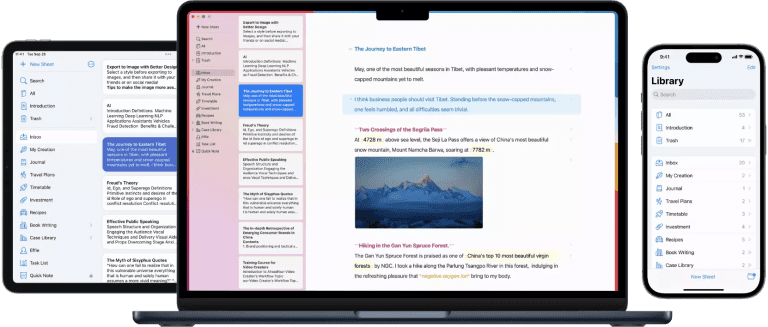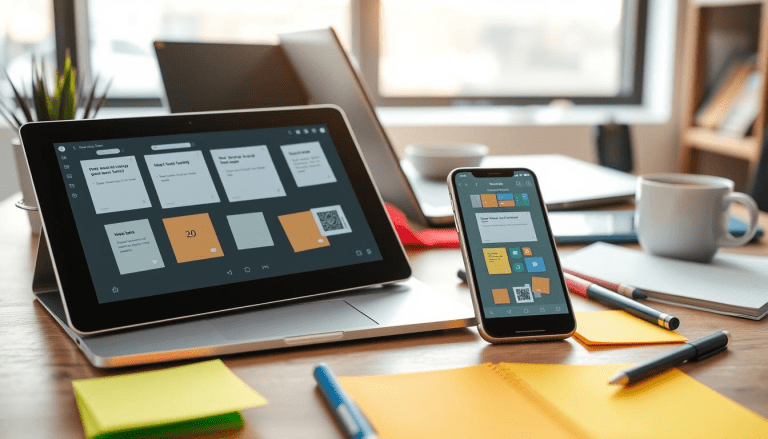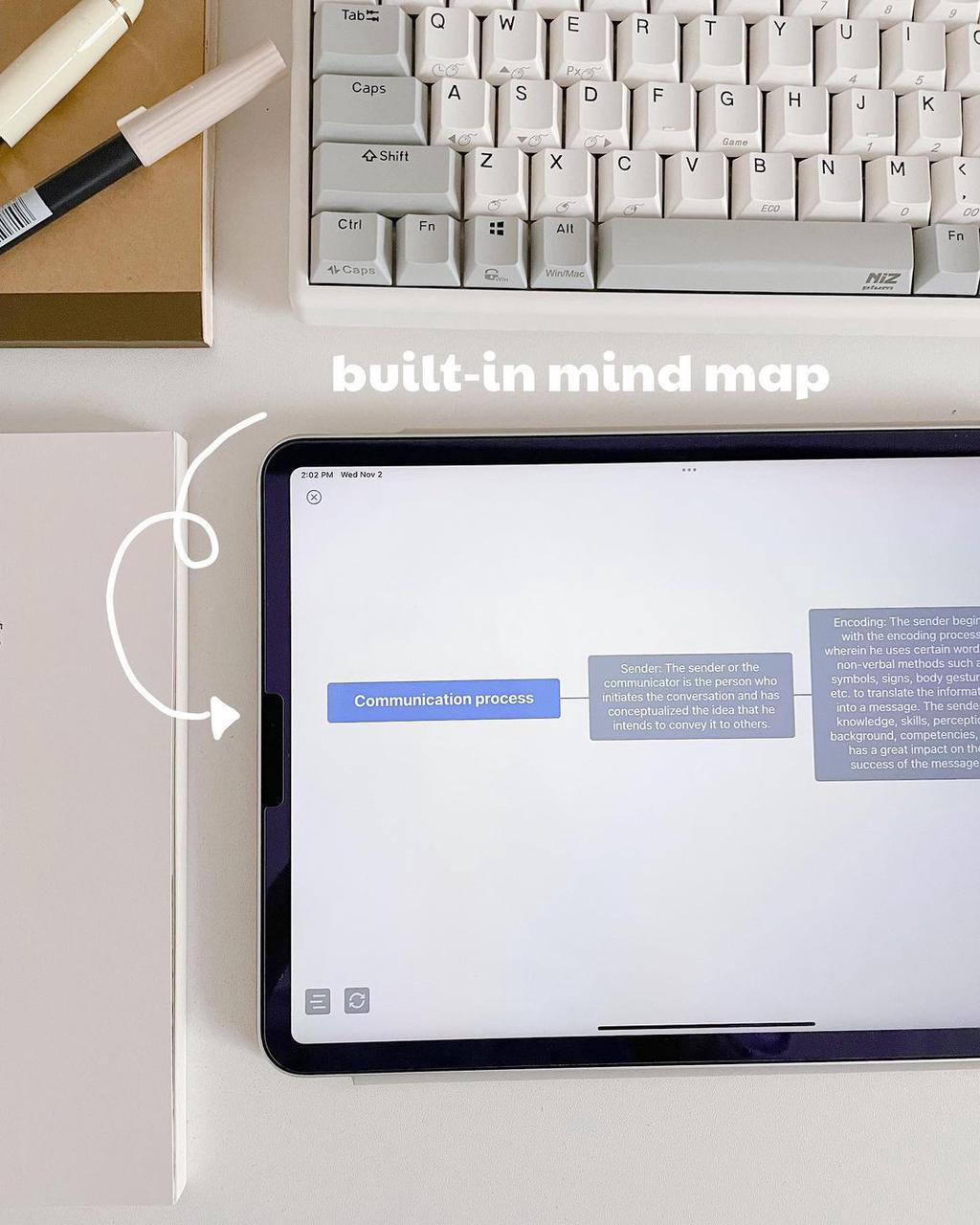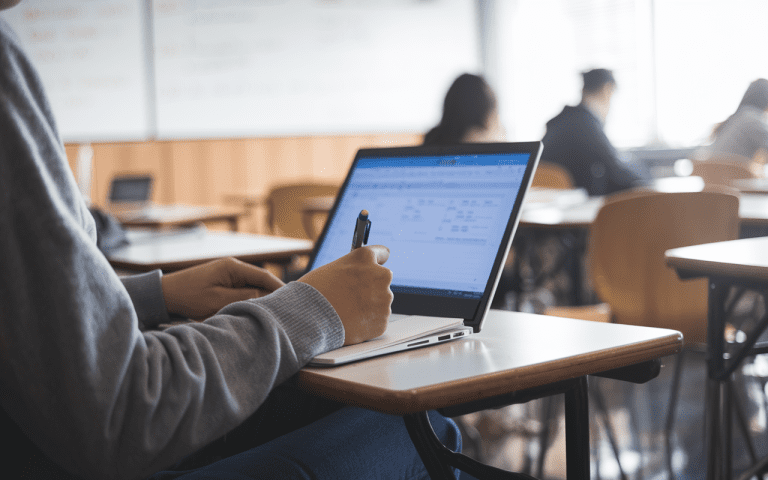How to Take Notes for Effective Reading
I’m sure you all take notes at some point during classes. The reasons for doing so are quite obvious. Note-taking improves our concentration, enhances our understanding, and assists our memory.
Yet how many of you also take notes while reading books?
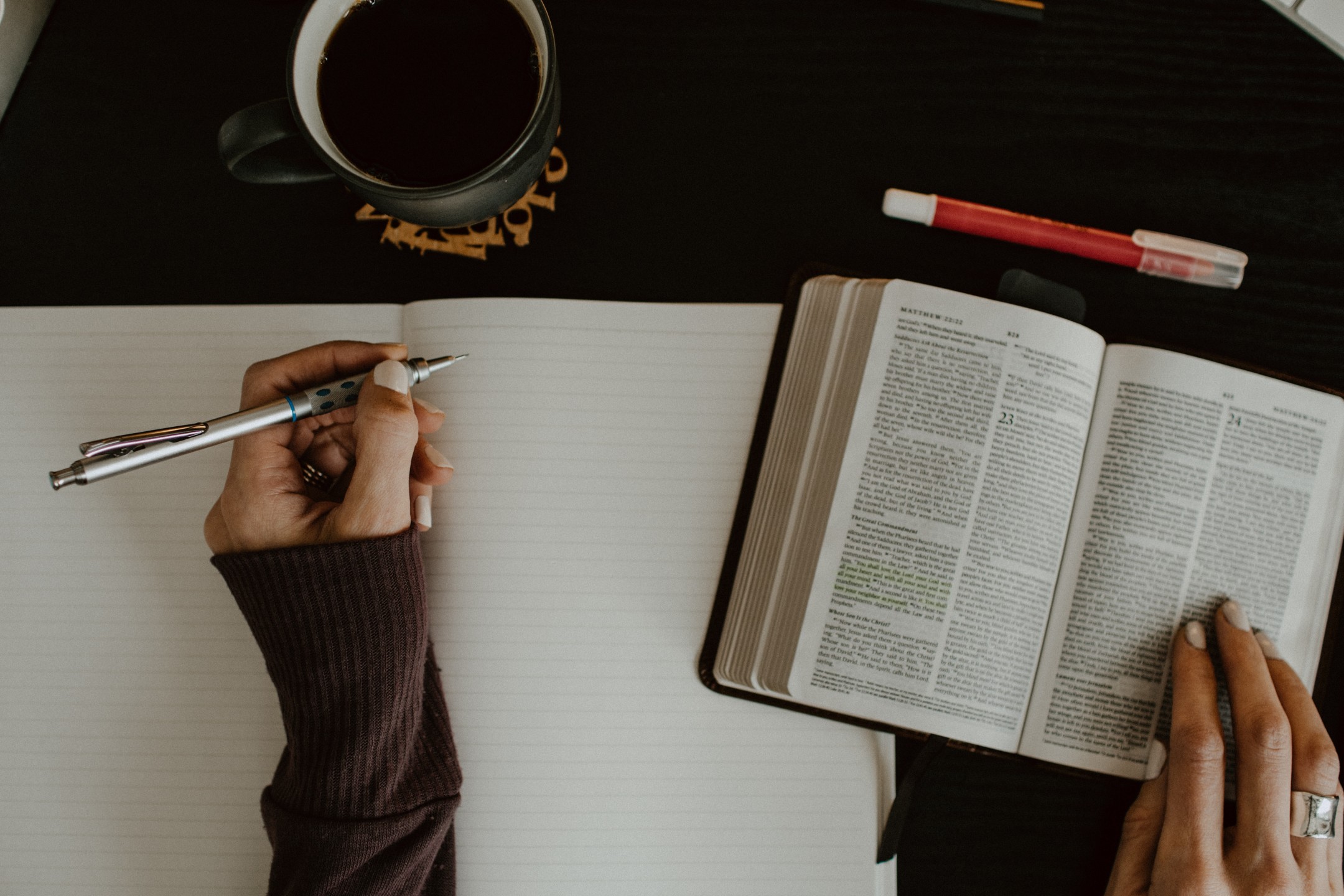
Presumably not so frequent as in-class notes.
How so?
The most evident answer would be that books are much easier to refer to, while it’s less likely that we can take a second visit to the same class. So we take notes to reduce memory loss.
However, memory loss also happens when we read, especially without taking any notes. Reading with no notes also makes it harder when we do need to refer to certain information later. Without notes, we’re slow at locating information and finding exactly what we need.
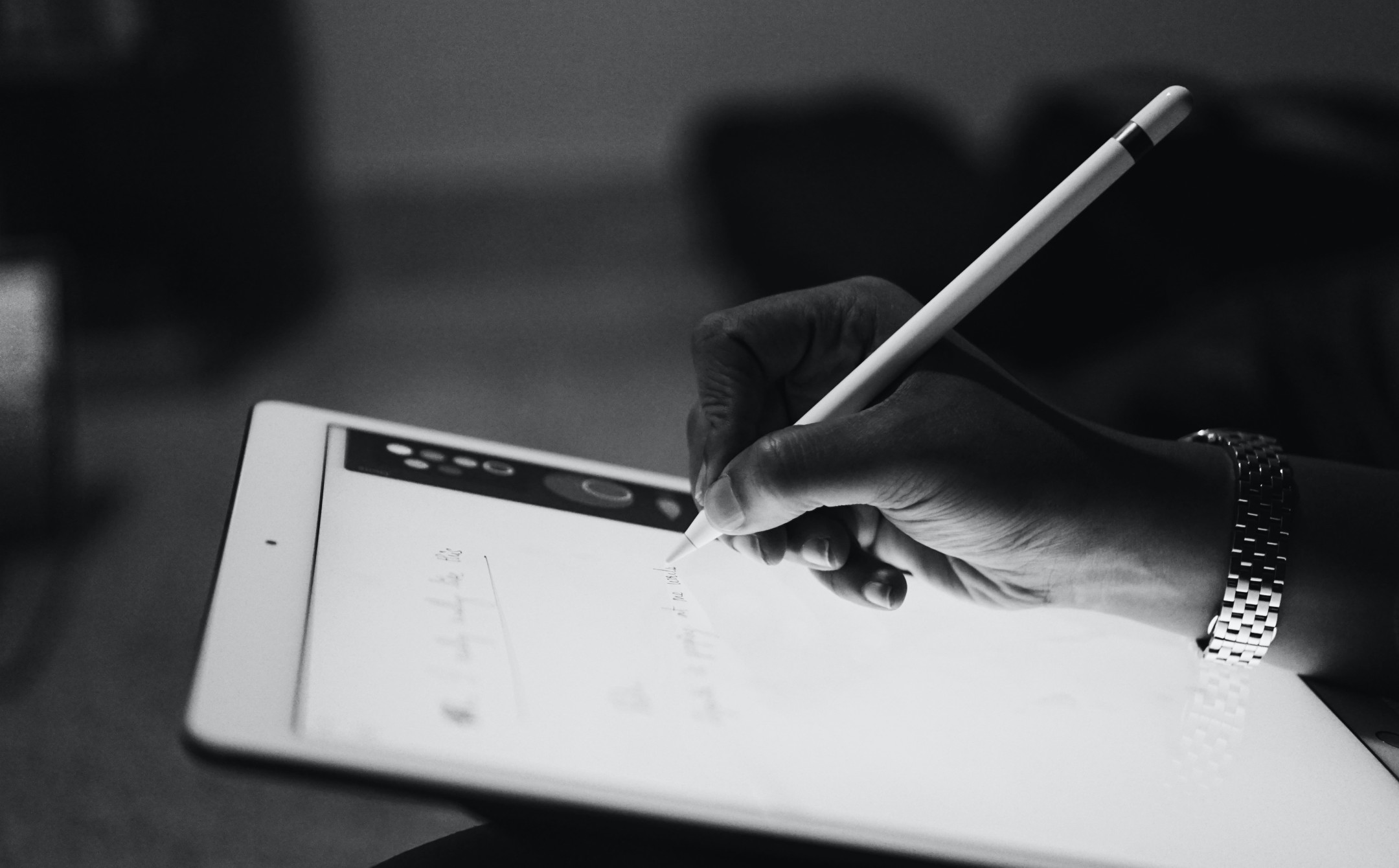
Still, some might say taking notes while reading interrupts their reading comprehension and experience.
That’s true, but not when you take smart notes.
Three smart note-taking systems to consider while reading
To get the most out of what we’re reading, it’s critical to find a note-taking system that works best for you. Great notes help to organize newly-learned knowledge, trigger better thinking and understanding of the given materials and consolidate what we’ve read for later use.
When I read, I mainly use the following three note-taking systems to read more effectively.
1. Mind map the structure of the reading material
A mind map extends our thinking by stretching the possibilities. With the aid of visualization, we can benefit in three ways as stated below:
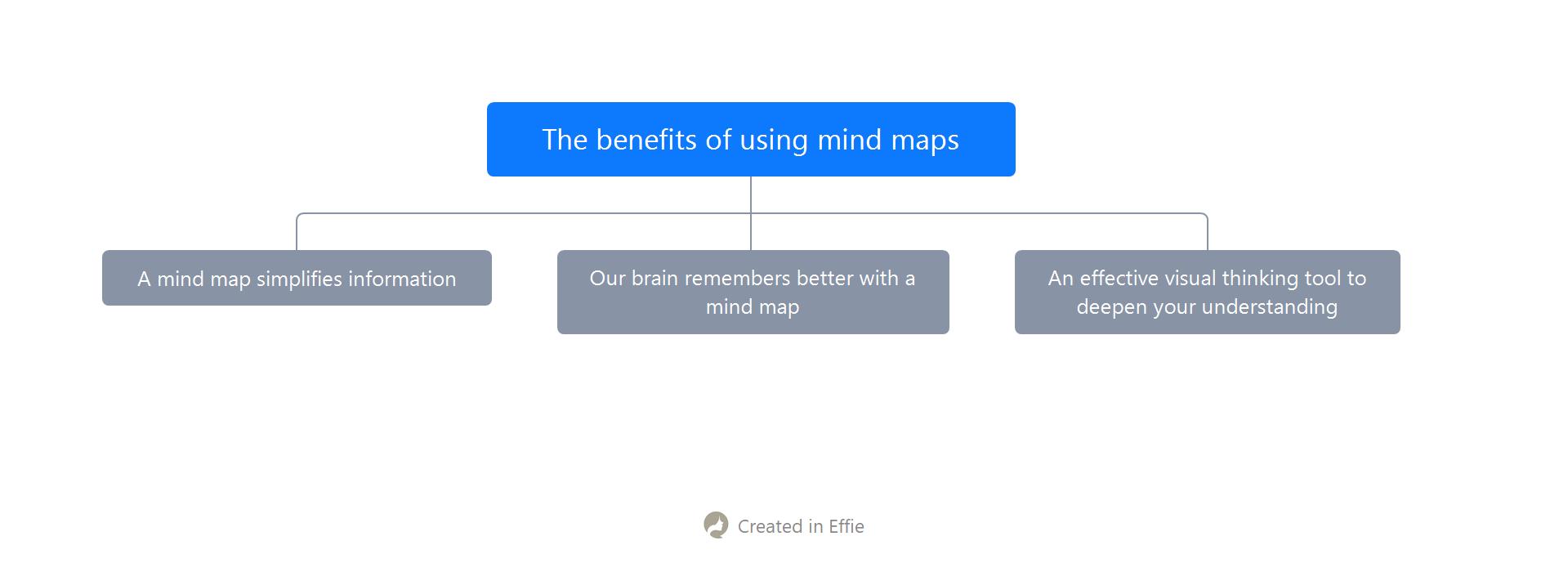
- A mind map simplifies information. A mind map uses keywords and associations to build a basic structure of the knowledge learned. When we look at a mind map, we can immediately notice the gist of the information presented.
- Our brain remembers better with a mind map. A mind map is basically an image, and our brain is, in fact, quite efficient and accurate at processing visual information (60,000 times faster than text to be precise) than other forms of information even given insufficient time. Therefore, we’re more likely to recall more information in a mind map than in notes written in plain text.

- A mind map is an effective visual thinking tool to take your understanding to a higher level. It’s easier to search and locate necessary information in a mind map than from a large chunk of texts or scattered ideas. Information classification is one more thing you can get from mind maps, which happens naturally while we’re making one.
So how do I use mind maps to facilitate reading? Here are some easy steps to follow.
How do I create mind maps to facilitate reading?
a. Find a central topic.
When I’ve already had several questions in mind before reading, then the questions are usually my central topics, my major concern over reading. Writing down the questions reminds and emphasizes the purpose of reading—trying to find answers to the questions.
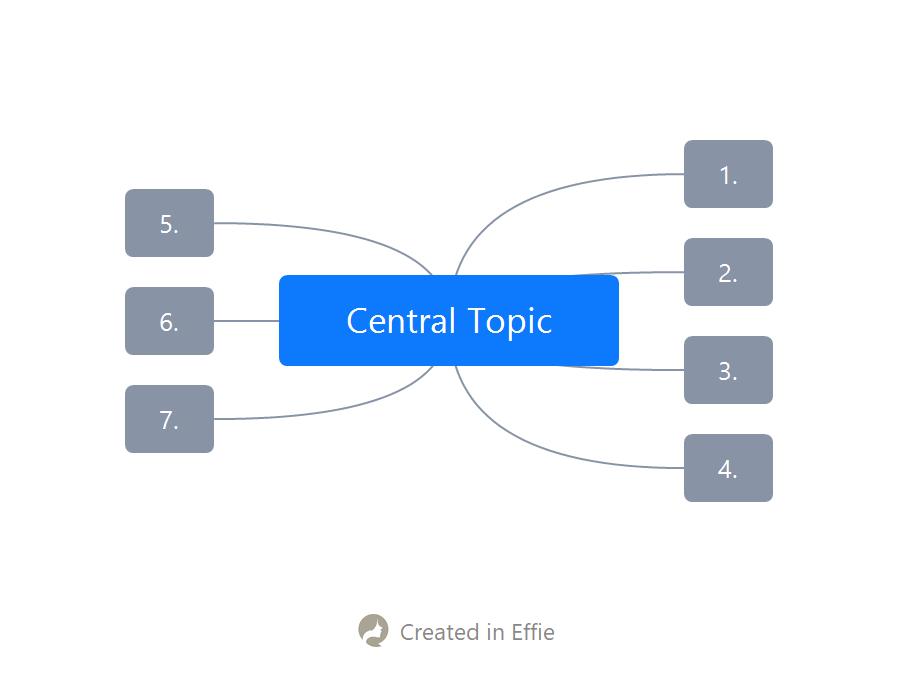
However, there are times when I have no idea of what I’d like to get out of a book, especially when it specializes in some areas that are new to me, how do I locate the central idea then?
The hint always lies on the Content page.
The content page usually presents the most essential information summarized by the authors. It’s their way of thinking to present all the information in a certain order, and in most cases, quite useful for us to refer to for starters.

Sometimes I’d also read the preface to also get a glimpse of the author’s writing style and what topics they intend to cover in the book.
The idea is to know the outline of reading materials without digging into it first. It’s like trying out the free samples at grocery stores, you’ll know if it’s exactly what you’re looking for or if it’s something new that you’d like to try or rather not.
b. Note down key information in the same order presented by the writers.
For me, I’m less likely to have a deeper understanding of a given text when I just start reading. It’s like watching a new show on Netflix, I’m more eager to know the plot than to analyze the details during my first-time-watching.
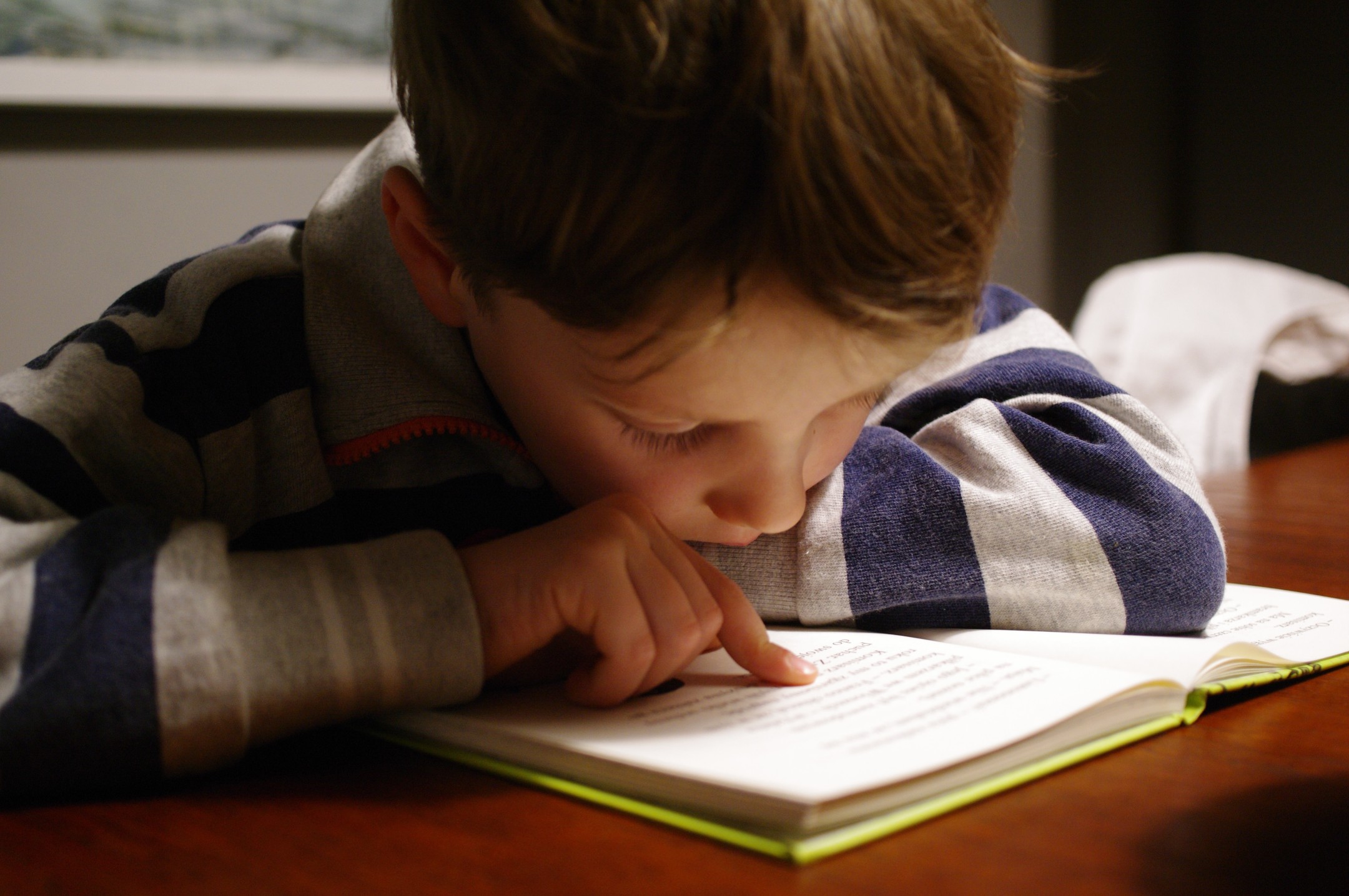
But what makes reading different from videos is that we can always make it at our own pace.
- We can pause to think.
- Check previous contents.
- Read the same paragraph over and over again whenever we feel like it.
The point is to gather and keep a record of the author’s perspectives before making any judgment or further analysis
c. Reorganize and insert personal ideas.
After knowing the author’s perspectives on the central topic, I’d move on to the next step (my favorite part, to be honest). That is, adding my own thoughts to it.
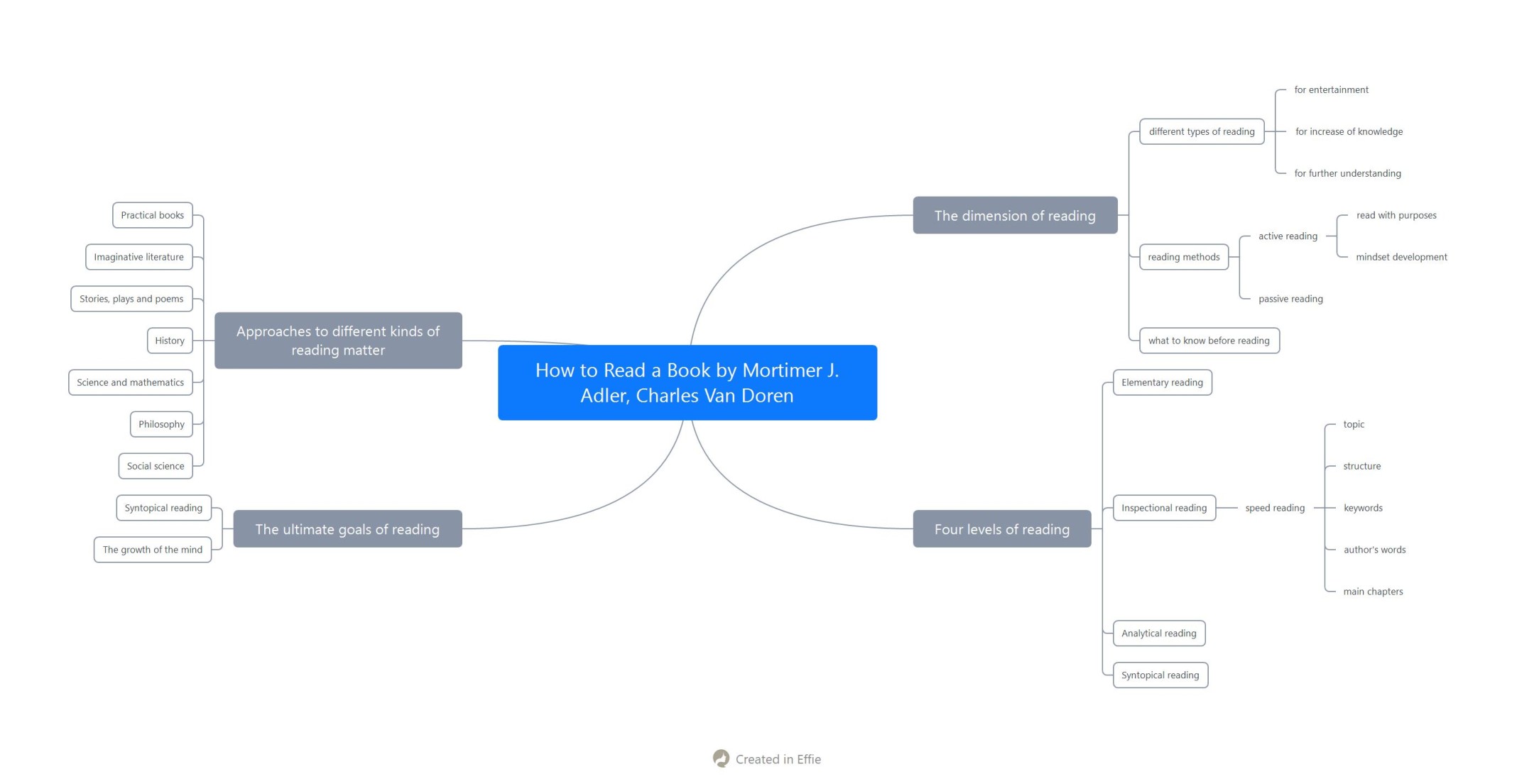
It’s okay to agree with all the information received, but I also enjoy tailoring it in a way I can understand better or remember for a longer period. This can be achieved by using my own words to explain terms and concepts or re-ordering ideas in a way that best facilitates my memory.
2. Jot down anything that resonates with me while reading
What happened to me in the past was that no matter how much I love a book, the only comment I could make years after was that “it’s a great book”. Other than that, I wasn’t able to provide any further descriptions or insights about it.
So, to remember more of what I’ve read and be able to share more insights, I found it essential to note down some sentences, especially those that leave me with deep impressions at first sight.
How do I remember what I read
a. Note down the basic information
Before jotting down insightful sentences, here are three basic information I’d usually add to my note:
- Date
- Book title
- Author name
For instance: [25 April 2022] How to Read a Book by Mortimer J. Adler & Charles Van Doren
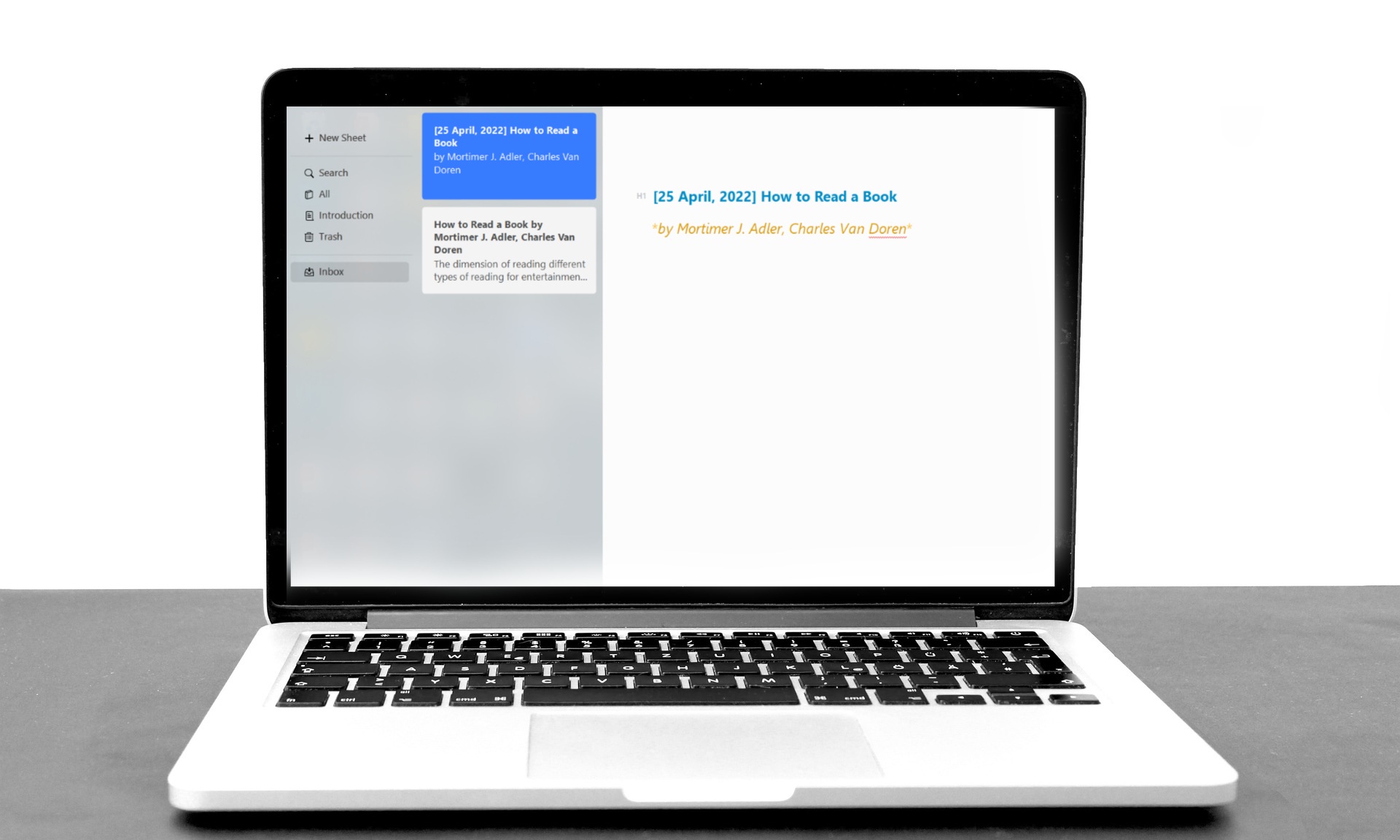
This information is quite helpful when I need to search and refer back to my previous notes. I’d know in which book I read about the information.
b. Copy insightful sentences
Whenever I read something that is beautiful, thought-provoking, and convincing, I’d love to keep them down in Effie.
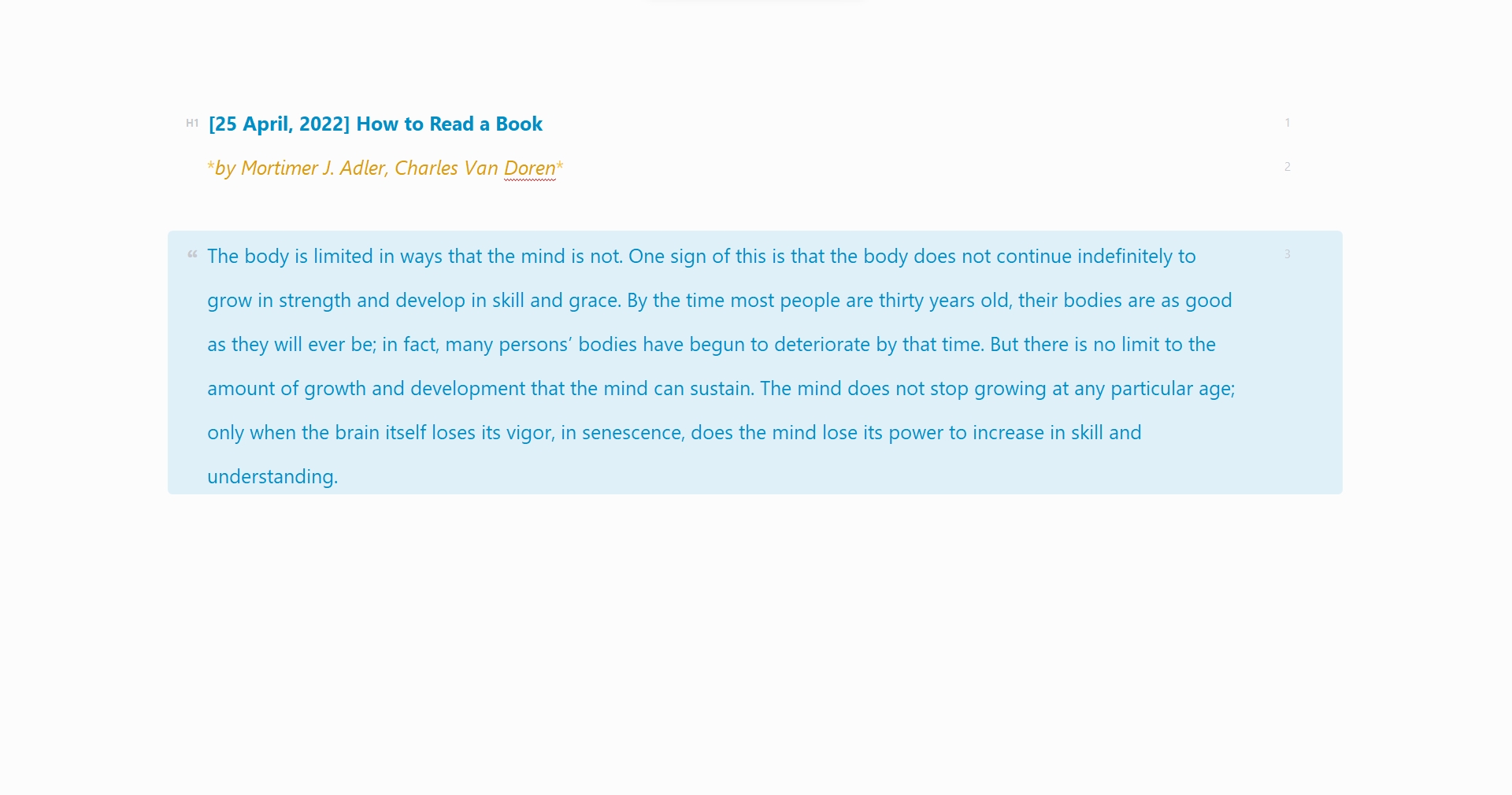
Jotting down in exact sentences as originally written by the author makes sure the information is kept intact and prevents future misunderstanding. So when I make a return visit to my previous notes, what I can get is the original version. There is no need to check or re-read the whole book for verification.
c. Add my understanding
The way we perceive things keeps changing all the time. So it happens when we re-watch a movie, re-visit a place, re-read a book, we end up paying attention to something we might have missed last time or having slightly or tremendously different perspectives on the same issue.
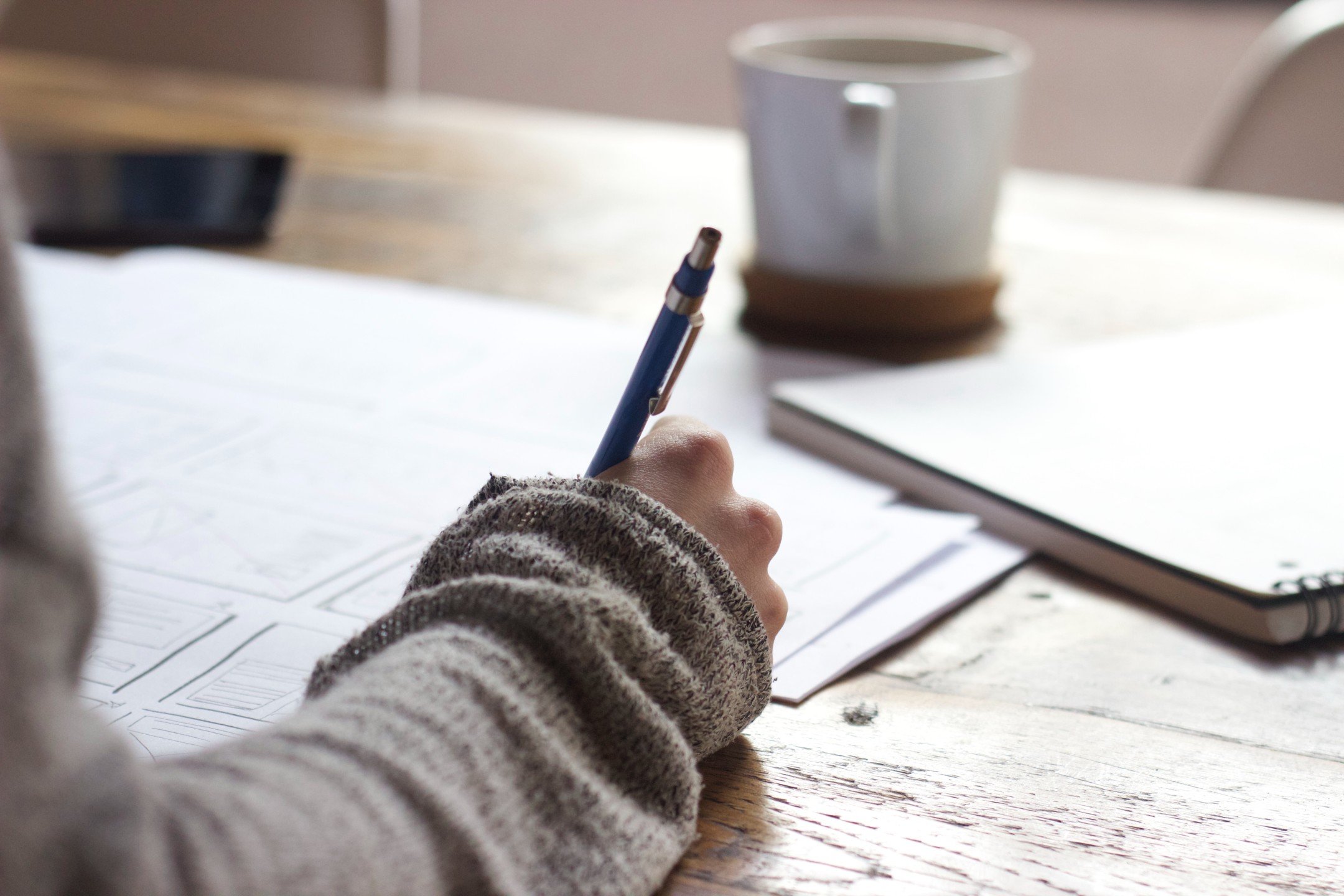
That makes it even more important to keep down our thoughts at the moment, right after we copy down what’s been said by the author. I’d like to keep it as fresh and clean as possible for future reference.
d. Review my notes
As said, we tend to perceive things from different angles when we read, hear, and experience more in life.
One thing about reviewing my notes is that I can always find something new in it, which allows me to add new comments or understanding to my previous notes.
Another thing is that it reinforces my memory of what I read, say two weeks ago. By repetition, I can rely less on my notes, but more on my brain. I believe that’s one intention to take notes in the first place, and that is to make the knowledge yours.
3. Read effectively with e-Zettlekasten
Zettlekasten is not only a very helpful tool that we can apply while writing, but it also helps to smooth our reading experience. I especially enjoy using e-Zettlekasten when I start syntopical reading.
Here’s how:
a. Collect useful information
Contrary to other forms of note-taking, the space that a card can offer is quite limited.
The good news is, that we only need to keep down what’s essential.

Usually, I’d keep down keywords, page margin, and book title on each card. After creating multiple cards, the next step is to connect the dots.
b. Connect the dots
When we have all cards at hand, we can start making connections before we put them into our digital note archive. This is when the page margin comes in handy, which directs us to find what we need quickly.
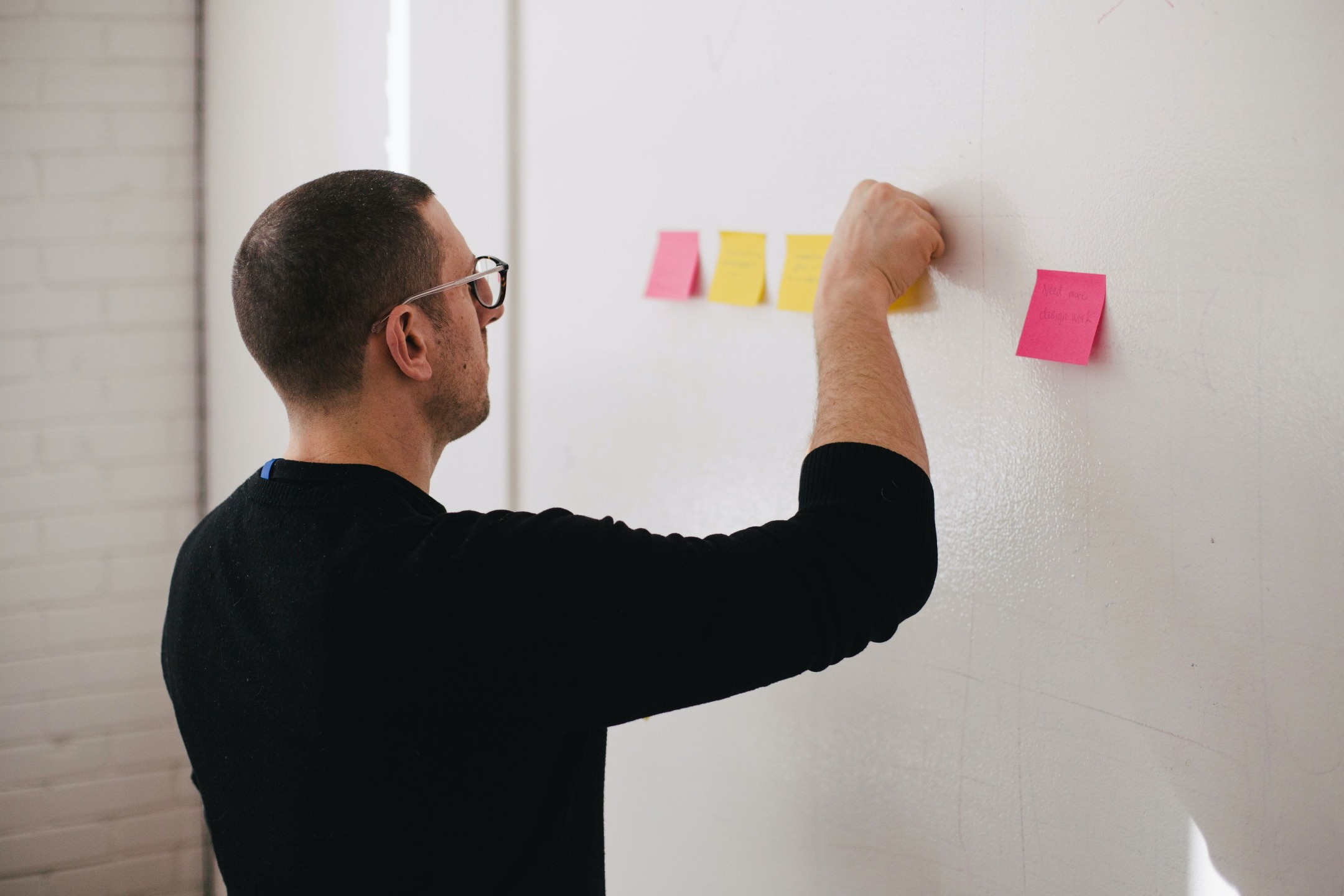
By connecting messages in each card, we again summarize and classify what we’ve read. Therefore, when we look back on our e-Zettelkasten, we can remember details.
It’s not hard to conclude that, note-taking is quite a significant tool that we need to integrate into the process of reading. Different note-taking methods can serve different purposes.
You can stick to one or combine various methods. The idea is to enhance our understanding of what we read and to remember what we read.
Happy reading! 🙂

